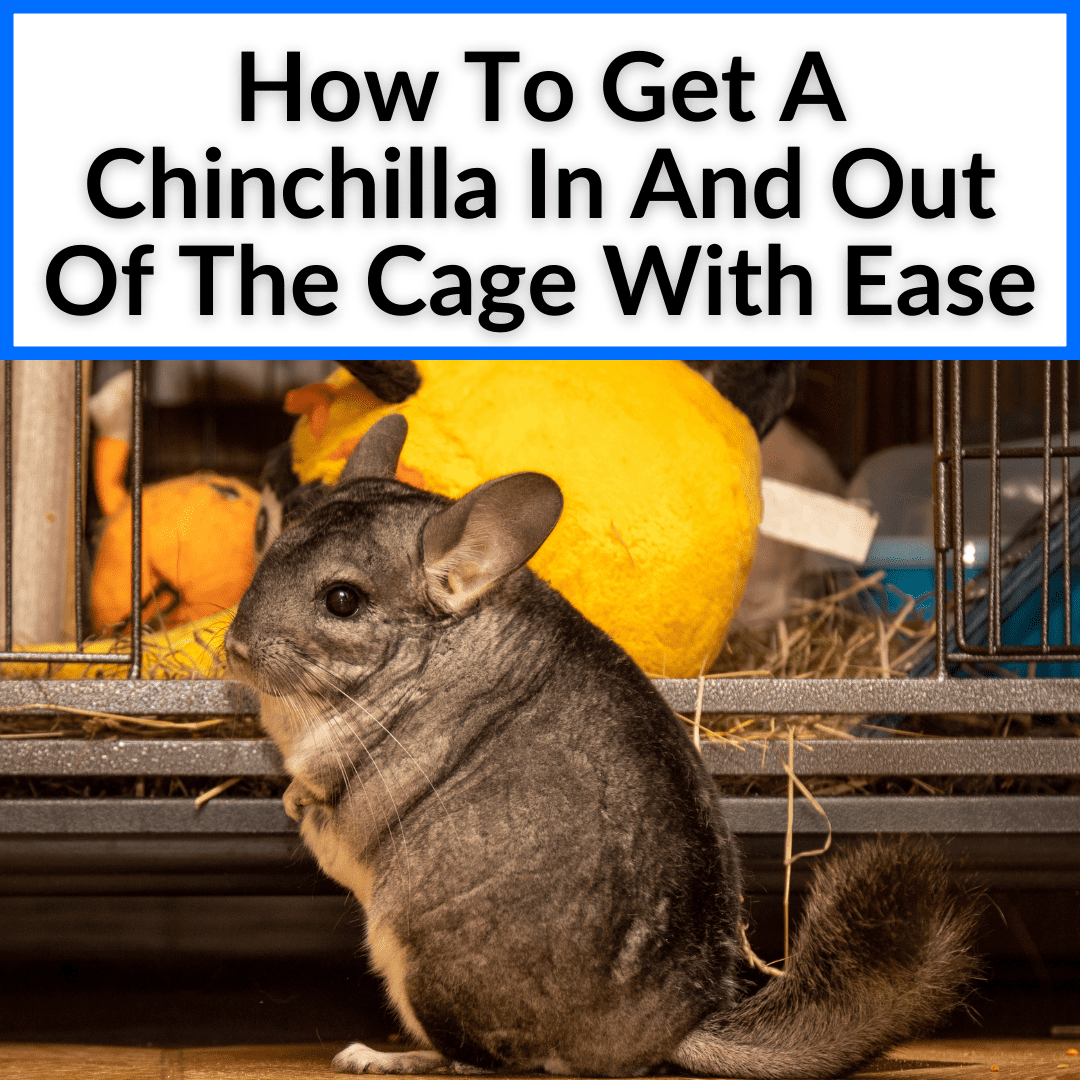
Some of them can be difficult for new owners.
Perhaps the biggest is getting your chinchilla in and out of its cage.
This is something you’re going to have to do. Chinchillas need time outside the cage for playtime, dust baths, cage cleanings and more.
So you need to learn how to get them in and out effectively. And that’s exactly what we’ll be helping you with below.
Keep reading to learn how to successfully get your chinchilla in and out of the cage with as few hassles as possible.
Contents
- 1 How To Get A Chinchilla In And Out Of The Cage
- 1.1 Understanding Chinchilla Behavior And The First Days Home
- 1.2 Earn Trust To Succeed
- 1.3 Keep It Slow And Calm, Especially In The Beginning
- 1.4 Use A Pop-Up Animal Play Tent Instead Of A Chinchilla Proofed Room
- 1.5 Make Getting Out Of The Cage Fun For Your Chinchilla
- 1.6 Close Supervision Is Imperative
- 1.7 Get On Your Chinchilla’s Level And Don’t Push The Situation
- 1.8 Consider Using A Travel Carrier With Treats
- 1.9 Dust Baths Can Work Wonders
- 2 Get Chinchilla In And Out Of Cage: Final Thoughts
How To Get A Chinchilla In And Out Of The Cage
Trust me, my friends and fellow chinchilla owners, I know exactly what you are going through. I was in the exact same situation when I first adopted my chinchilla.
It’s tough to get your chinchilla to do much of anything in the beginning, before it adapts to their environment and gets used to you as the new owner.
But it’s not impossible. It merely takes time. And the sooner you welcome that idea, the better off you will be.
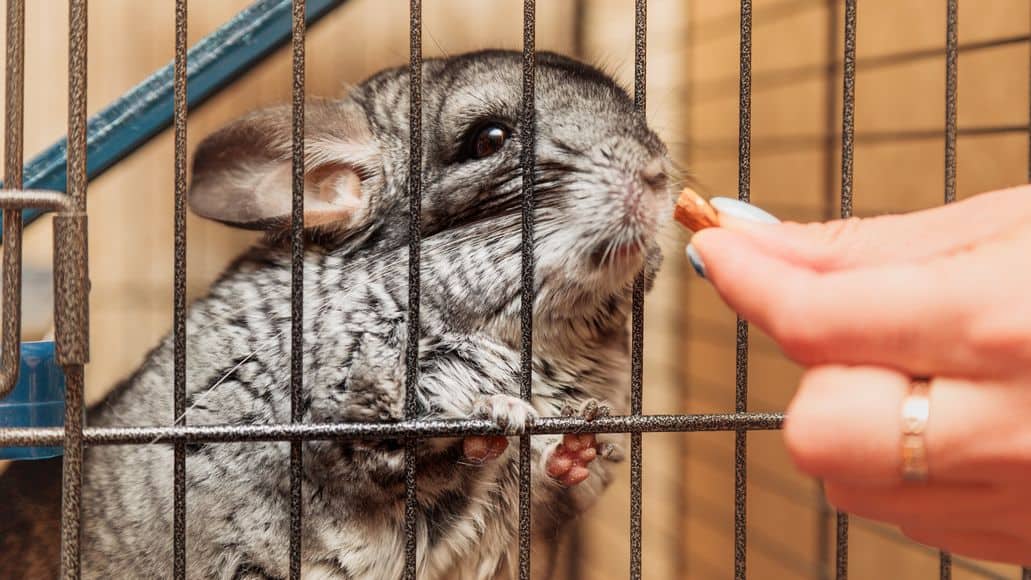
One thing you don’t want to do is resort to seemingly easy solutions, like putting your pet in a harness. Read “Can Chinchillas Wear Harnesses?” to learn why this is a bad idea. And chinchillas should not wear collars either, for the same reasons.
So you know the only solution is time and patience. But it’s still important to understand the basics of chinchilla care and the personality characteristics of chinchillas. This article with fun facts about chinchillas can help.
And, of course, you need to know what to do to successfully get your chinchilla out of the cage, and to place it back inside the cage when the time comes.
I’ve created a quick video you can reference on this topic that briefly covers everything in this post, for those of you who prefer to watch a video over reading.
While the video includes a few tips, I still highly recommend reading the rest of this post to ensure you get all the critical tips and tricks you need to get your chinchilla in and out of the cage with ease.
Here is that video for you.
Now that we have seen a visual, let’s dive into the rest of the information that’s essential to understand and get you to a place where you are getting your chinchilla in and out of the cage with ease.
For starters, let’s get you familiar with how your new chinchilla will likely behave during the initial days home and what you can expect to see from your pet.
Understanding Chinchilla Behavior And The First Days Home
Getting a chinchilla in and out of the cage effectively all begins with understanding a chinchilla’s natural behaviors and tendencies.
If you understand this, you’re one step ahead of the game, because you can relate to your chinchilla and know why it behaves in the manner that it does.
For example, it’s imperative to understand that chinchillas are naturally shy and scared. This will be especially apparent in the beginning, when you first bring yours home.
This should come as no surprise, since chinchillas are hunted in the wild, by any number of predators.
It can take days, weeks, or even months for a chinchilla to start coming out of its shell and to begin showing more love and affection towards you.
This all starts with your efforts in the process, and what you do to gain your chinchilla’s trust and respect.
That’s what we need to cover next. And it is perhaps the most critical advice you will find in this entire post.
Earn Trust To Succeed

Earning trust with your chinchilla takes time. Plain and simple.
It takes you respecting your chinchilla’s space and moving at a speed with which it is comfortable. In the beginning, this is a very slow speed.
In fact, I don’t even recommend letting your chinchilla out of the cage much in the first few weeks.
All that needs to be happening during this warmup period is you interacting and speaking to your chinchilla from the opposite side of the cage bars.
It can even take its dust baths inside the cage, and simply remain there constantly, until it gets used to all the sights and smells around your home.
It won’t take long for it to warm up to you, and it’s much better to take things slow and let your chinchilla move at a comfortable pace during this period.
If you try and push the issue too much, it can be difficult to gain your chinchilla’s trust.
They do get scared easily, so it’s important not to push the boundaries too much.
This leads me to emphasize this point even more.
Keep It Slow And Calm, Especially In The Beginning
Even after a few weeks, and assuming the warmup period has passed and your chinchilla is showing a bit more enthusiasm, it’s still important to take things slow.
You don’t want to try and overly cuddle or handle your chinchilla in these early phases, even if the trust has been somewhat established.
Now that you are letting your chinchilla out of the cage and interacting, it’s still best to allow your pet to dictate the tempo and pace of the relationship.
Get on your chinchillas’ level and sit down on the floor with it. Allow it to come to you, sniff you, and jump all over you.

It may not do this much in the beginning days when you are attempting to get it in and out of the cage on a frequent basis. But trust me, it will start interacting with you more. And it enjoys this time out of the cage.
Now, if you want to speed up the process and make the bonding accelerate even faster, in addition to making your life that much easier when it comes to getting your chinchilla out of the cage and placing your chinchilla back in the cage, I highly recommend considering my next suggestion.
Use A Pop-Up Animal Play Tent Instead Of A Chinchilla Proofed Room
I’m not sure how many chinchilla owners use one of the methods I’m about to present, but I can assure you that they certainly work.
Let’s start with the most common and known way of letting your chinchilla out for playtime, which involves just ensuring that you have a chinchilla proofed room in the house.
Typically, there are a lot of areas in the home that aren’t safe. Of course, you’re already aware of this.
That’s why it’s usually recommended that you begin by using a smaller, more contained, room, like a bathroom. With the toilet lid closed, of course.
The problem you encounter when letting a chinchilla out of the cage is the immediate threat that typical household rooms can pose for them.
This can include other pets roaming around, exposed wires, or areas where it can become challenging to find them if they jump out of your sight, such as a cluttered basement where they can easily run away and hide.
This is clearly going to make it more difficult to return your chinchilla to the cage as well.
Again, in these situations, either fully proof the room where you intend on letting your chinchilla out of the cage in or stick to a small room where you can keep an eye on your chinchilla such as a bathroom.
Now, comes my secret weapon.
I used this method in the beginning and I still use this method to this day. It’s an excellent alternative for interacting with your chinchilla.
The Pop-Up Animal Play Tent
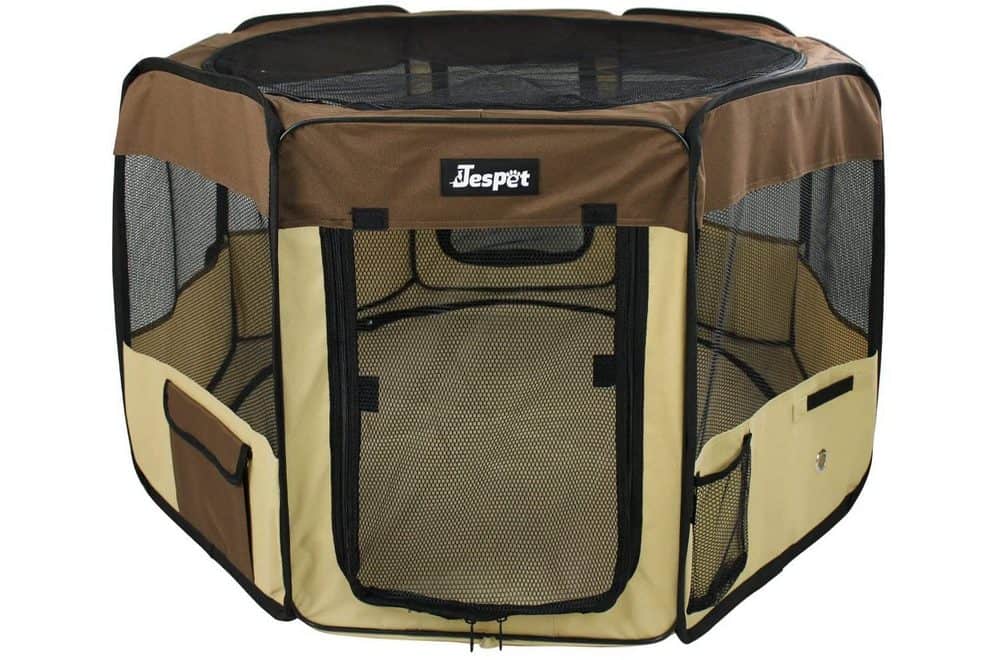
This is my secret method to accomplish several things when you own a chinchilla. First and foremost, it makes it extremely easy to get your chinchilla in and out of the cage.
Especially for a beginner.
All you need to do is open the flap or door entry on the pop-up animal play tent and then open the cage door into the tent.
This means when your chinchilla exits the cage, the only place it can go is into the tent with you.
This allows you to be hands-off in the beginning, while your chinchilla is getting used to you and beginning to build a bond with you.
Once inside the tent, it’s 100% safe for your chinchilla to interact and play with you. There are no cords to worry about, and nowhere your chinchilla can escape and encounter other potential dangers.
Not to mention, it’s fully breathable and has plenty of room for your chinchilla to jump. You can even fit another adult or two inside many of them, so several of you can interact with the chinchilla at once.
These tents are great tools and definitely make getting your chinchilla outside of the cage and putting it back into the cage a walk in the park.
This article reviews 3 great pop-up tents. The first is the exact one I use in my basement for my chinchilla.
Seriously, outside of choosing a quality chinchilla cage, this is arguably one of the most important purchases I recommend for all new chinchilla owners.
If need be, choose a smaller size to save a few bucks. But overall, this is a must-have for any new chinchilla owner.
A nice added benefit we haven’t mentioned yet about this method is the fact that it also helps build the bond with your chinchilla faster.
This is because it forces a closer interaction with you as the owner.
It will only take a few days using one of these pop-up tents before your chinchilla is jumping on your shoulder and getting more used to being handled by you as the owner.
Now, no matter which method you prefer to use, we still need to make it fun and interactive for your chinchilla, which leads me to my next point to discuss.
Make Getting Out Of The Cage Fun For Your Chinchilla
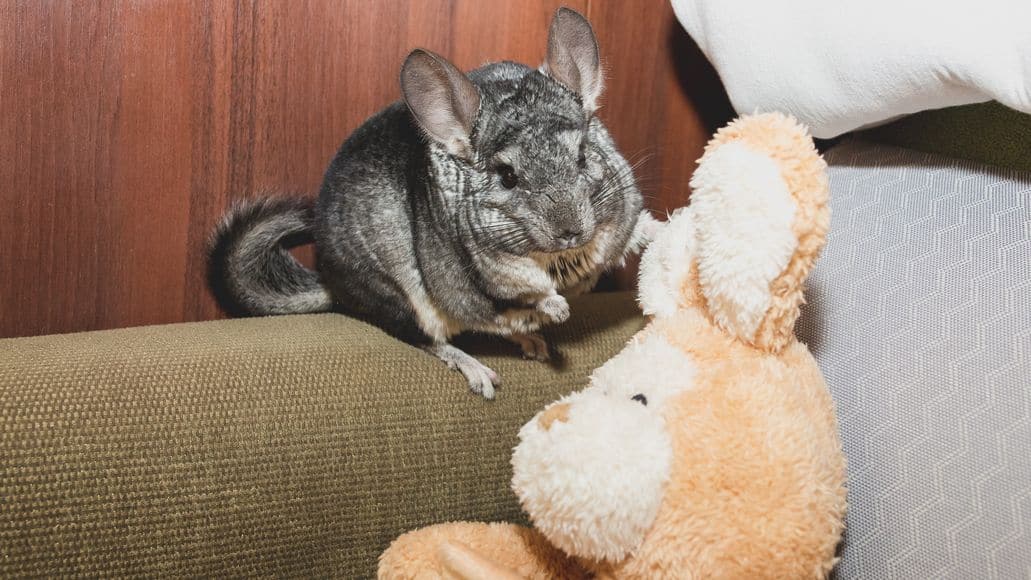
Whether you are using the tent idea or a chinchilla proofed room, you still want to make it somewhat entertaining for your chinchilla when it is out of the cage.
Give it a reason to want to interact with you outside of the cage. This can include using items such as empty toilet paper rolls or other fun items to chew and climb in.
Of course, you can always offer your pet a dust bath. Chinchillas always enjoy those.
The point is that you don’t just want your chinchilla in a safe room, bouncing off a few walls and returning to its cage.
Give it at least a little something to do during its time out of the cage for optimal results.
Close Supervision Is Imperative
Alright, let’s move onto another safety tip you need to be implement when you are getting your chinchilla out of the cage.
Supervision is always imperative. You don’t want to leave your chinchilla out of the cage with no supervision.
This is an invitation for it to run away, and it can be very difficult to locate it if this happens. Not to mention the other dangers it may be able to find.
When you get your chinchilla out of the cage, interact with it, and keep a close eye on it to ensure nothing happens to your new furry friend.
Get On Your Chinchilla’s Level And Don’t Push The Situation
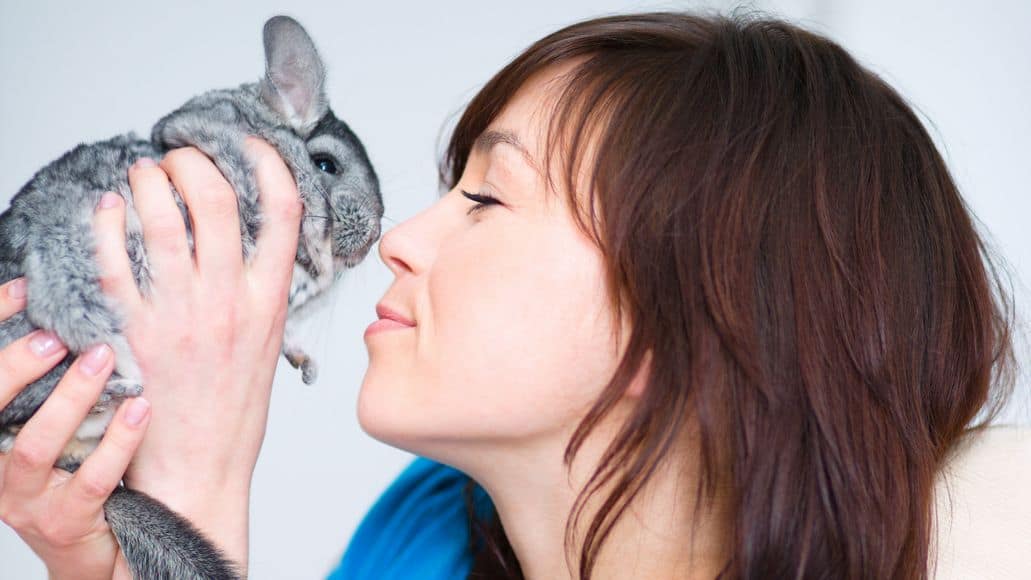
Alright, let’s assume that you have been able to get your chinchilla out of the cage, but now you are struggling to gain your chinchilla’s trust to get it back inside of the cage.
One tip I have for you is to simply begin interacting with it on its level. Yes, it sounds exactly as I mean it to sound.
Get down on the floor and interact with your chinchilla. Lay down or sit on your butt and talk to your chinchilla. Sit with your palm out and let your chinchilla come to you in the beginning.
It is the best way to begin teaching your chinchilla to enjoy being held and to have full trust in you.
It’s also one of the only options you have if you want to get to a point where you have zero troubles with getting your chinchilla back into its cage without issues.
However, let’s not forget that sometimes, chinchillas can just be stubborn in the early days of ownership and may need a tad bit more incentive to get back inside of the cage.
Don’t worry, we will plan and be ready for that possibility as well.
Consider Using A Travel Carrier With Treats
One of the last resorts you can try is to use one of the better travel carriers and place treats such as dried oats or other dried fruit inside.
Don’t force or push your chinchilla into the carrier.
Simply wait and sit with the door open on the cage and then shut the cage as soon as your chinchilla has entered.
I’m not a big fan of this method mainly because I believe it somewhat breaks the trust.
If your chinchilla goes into the travel carrier on good terms and realizes you were simply trying to trap it and return it to the cage, this little trick likely won’t work too many more times.
Chinchillas are very smart rodents and don’t like to be fooled.
Nonetheless, returning your chinchilla to its cage needs to get done one way or another, and if all else is failing during the initial week of having your chinchilla home, a travel case may be a viable path to take to get the job done safely.
Dust Baths Can Work Wonders
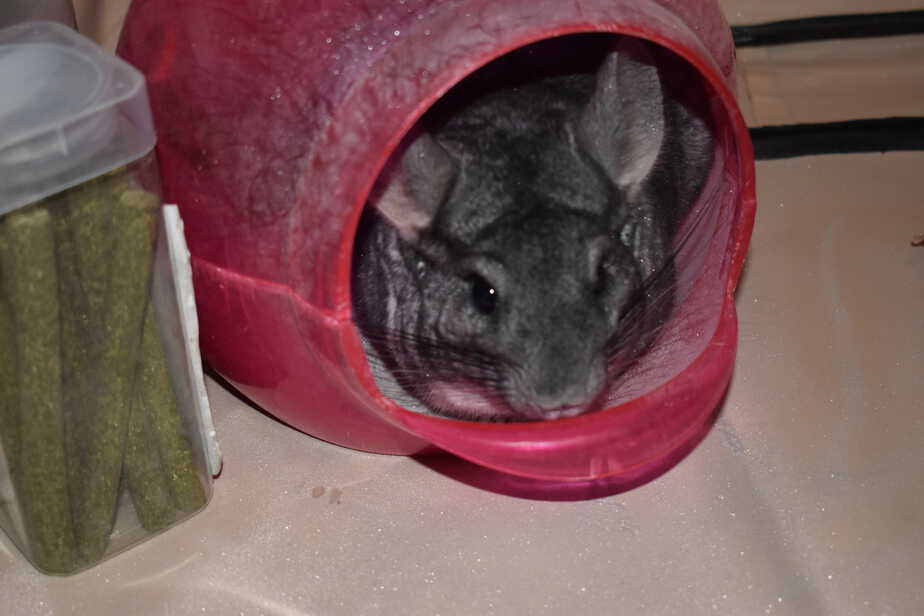
Dust baths are another great way to get your chinchilla in and out of the cage with ease.
Chinchillas absolutely love their dust baths, and they understand what that container full of dust represents for them.
Use a dust bathhouse that has a full enclosure and lure your chinchilla inside and back into the cage using the dust bath to entice it.
It’s not one of my favorite methods, but it’s a fantastic way to get the job done and can even help you find your chinchilla if it has decided to hide from you.
Get Chinchilla In And Out Of Cage: Final Thoughts
This post is meant to teach you the best methods for getting your chinchilla out of the cage and back into the cage with ease and without having to restrain your chinchilla.
We hope it has done that.
Chinchillas make for fantastic pets. Especially once they have had time to build a bond with you and built trust with you.
The initial weeks may be a struggle while you are building this bond, and it’s likely going to be the hardest period you ever face when it comes to safely getting your chinchilla out of the cage and getting your chinchilla back into the cage.
Don’t fear this, however.
This phase ends quickly, and once you have a good understanding of how chinchillas interact and what they prefer, this will no longer be a struggle for you.
We have all been there, and we all go through that initial warm phase in the beginning. They warm up to you, and it gets easier every day.
Share your thoughts on this topic.
What methods do you use to get your chinchilla in and out of the cage with ease?
Do you use any methods that we haven’t discussed in this post yet?
Be sure to share those thoughts, concerns, and stories by dropping a comment below.
As always, Chili and I appreciate you stopping by. Thanks again for reading, and we will see you again next time.
Risa says
Need other suggestions for when cage is higher up and can’t directly feed into playpen